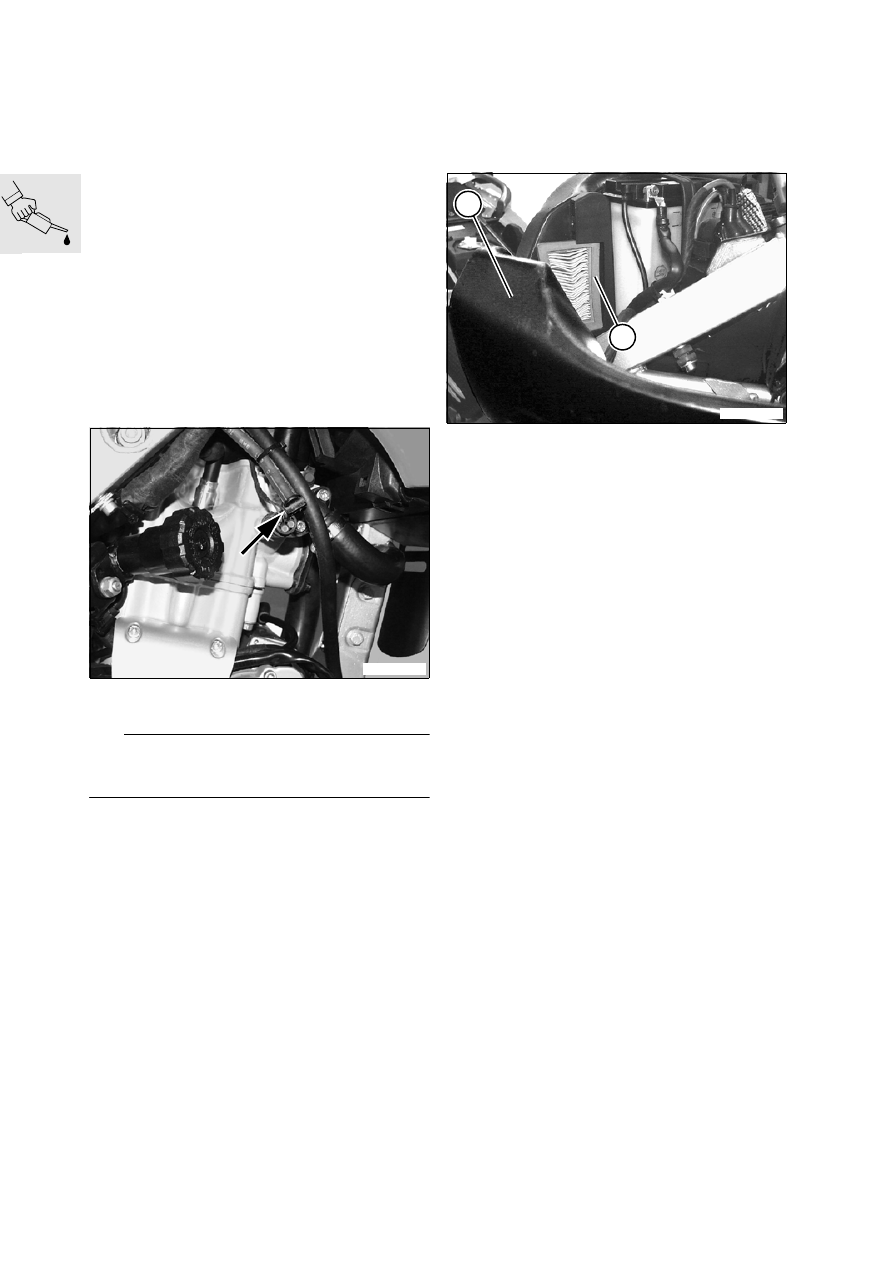BMW AG Motorcycle (F 650 GS). Manual - part 6

00.24
00 12 620
Replacing spark plugs
(Inspection III)
•
Pull spark plug connector off spark plug.
•
Remove the spark plug with the a/f 18 socket
wrench.
•
Installation is the reverse of the removal proce-
dure.
X
Tightening torques:
Spark plug.................................................... 20 Nm
Emptying drain hose from intake air
silencer
(Inspections II and III)
•
Have a funnel and drip tray ready.
•
Remove the plug (arrow) and drain off all the oil.
e
Caution:
Dispose of used oil in an environmentally compati-
ble manner.
00 13 630
Replacing air cleaner
element
(Inspection III)
–
Remove right cover.
•
Remove connecting flange from air filter box.
•
Pull intake air duct (1) out of the holder.
•
Remove air filter element (2).
•
Clean the intake air silencer.
•
Assembly is the reverse of the disassembly pro-
cedure.
X
Tightening torques:
Connecting flange .......................................... 5 Nm
E000130
E000140
1
2